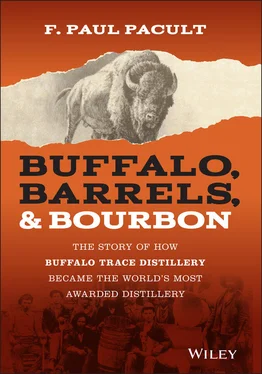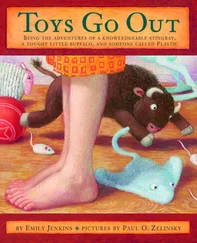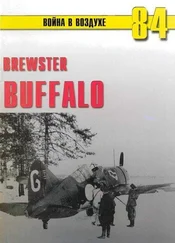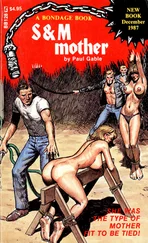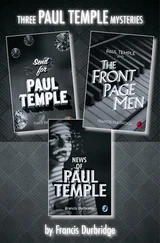In 1968, John A. Jakle, assistant professor of geography at the University of Illinois, composed a comprehensive paper, titled The American Bison and The Human Occupance of the Ohio Valley . 13 One passage from Mr. Jakle's document is particularly pertinent to this book, as it reads, “The Atlanant-o-wamiowee crossed into Kentucky at the mouth of the Licking River, proceeded south to Big Bone and Drennon's Licks, cut east to the Great Buffalo Crossing at present-day Frankfort, and continued via Lower Blue and May's Licks to the Limestone Crossing.” In the complex Shawnee language, an offshoot of the Central Algonquin tongue, Atlanant-o-wamiowee means “the buffalo trace.” But Mr. Jakle's most salient 10-word passage from his analysis is “… cut east to the Great Buffalo Crossing at present-day Frankfort …” Salient, for it is here at this place, the low trough of sandy bank and animal crossing on the Kentucky River, just a healthy stone's throw from what would become Frankfort, Kentucky, where the story of distilling in Kentucky's Bluegrass and Buffalo Trace Distillery starts.
The Unforgivable Extermination of Tatanka
In the pre-Columbian era, the robust North American buffalo population provided food from meat and vital organs, as well as shelter, clothing, weapons, tools, footwear, cord from hide and sinew, and fuel from dung for the native tribes that resided in the center of the continent. The nomadic Lakota, Pawnee, Kiowa, Osage, Blackfeet, Crow, Arapaho, Cherokee, Shawnee, Iroquois, Comanche, and many more tribes that followed the migrating herds of buffalo had a seemingly endless supply of basic sustenance. The native communities of the plains were, by and large, thoughtful in their relationship with the herds of tatanka , as the Lakota called the buffalo. For millennia, the tribes were aware that their own welfare and generational perpetuation depended almost entirely on their stewardship of the buffalo.
Everything changed for the worse starting in the late 1600s with the arrival of French, Spanish, and English hunters in North America's hinterlands. As weaponry evolved, the hunters' use of long-range, high-caliber Sharps, as well as Springfield and Remington No. 1 rifles, indiscriminately slaughtered buffalo for their hides, tongues, and horns, which were coveted in the eastern colonies and throughout Europe. Beginning around 1800, a cold-blooded, systematic extermination of buffalo conducted both by private citizens (often from the distant safety of trains or wagons) and the U.S. military brought the number of buffalo tumbling from tens of millions to less than 100 by 1883. This senseless, cold-blooded action stands as the largest case of mass murder of mammals over the span of one century in world history. The December 27, 1899, edition of the Morning Post North Carolina best summed up the genocidal crimes, saying, “One of the most extraordinary events that has characterized the last half of the present century is the extermination, the wiping out of the American bison … bones and pictures alone tell the story of a mighty race swept from the face of the earth by civilized people of the 19th century.”
Most evil of all, the U.S. government backed this act of premeditated mass annihilation to punish and cripple the Native American tribal societies, instigating, along with the intentional spread of viral diseases like smallpox, the downfall of the indigenous communities that once thrived from southern Canada to northern Mexico on land they viewed as sacred. A century and a half later, the pain of the native population continues on the squalid, poverty-stricken reservations scattered around the continent that are often located far from ancestral sites.
Meanwhile, dispersed among several states, the current buffalo population ranges from 500,000 to 600,000 head in the United States. Through the tireless efforts primarily of conservationists (Wildlife Conservation Society, National Bison Association) and the Native American community (InterTribal Buffalo Council), the U.S. Congress passed a bill, the National Bison Legacy Act, proclaiming the buffalo as the national mammal. The bill was made into law with the signature of President Barack Obama on May 9, 2016. Certainly, this institutional act is to be applauded, if tepidly. In light of the despicable mass slaughter that bathed the American prairies in the blood of the nation's most celebrated four-legged mammal, it seems like cold comfort indeed.
1 1John R. Kennedy. “Salt Licks.” In Encyclopedia of North Carolina. The University of North Carolina Press, 2006.
2 2Clarence W. Alvord and Lee Bidgood. The First Explorations of the Trans-Allegheny Region by the Virginians, 1650–1674, Cleveland, OH: The Arthur H. Clark Company, 1912, pp. 209–226.
3 3R. P. Stephen Davis, Jr. (ed.). “The Travels of James Needham and Gabriel Arthur through Virginia, North Carolina and Beyond, 1673–1674,” Southern Indian Studies 39 (October 1990): 31–55.
4 4Alan Vance Briceland. Westward from Virginia: The Exploration of the Virginia-Carolina Frontier 1650–1710. University of Virginia Press, 1987.
5 5The Courier Journal of Louisville. “Kentucky Pioneers: The McAfees Among The Distinguished Men Who First Settle the State: How They Came to the Dark and Bloody Ground and Their Later Adventures.” September 9, 1888.
6 6Williard R. Jillson. Pioneer Kentucky. State Journal Company, 1934, p. 12.
7 7John Filson. The Discovery, Settlement and Present State of Kentucke. Wilmington, DE: Printed by James Adams, 1784.
8 8William Clark. Journals of the Lewis and Clark Expedition – Volume 8. Notes from August 29, 1806; the Dakotas. Lincoln: University of Nebraska–Lincoln, 1993.
9 9George Imlay. A Topographical Description of the Western Territory of North America, Volume II. London, England: J. Debrett, Piccadilly, 1793.
10 10John A. Jakle. Salt on the Ohio Valley Frontier, 1770–1820. University of Illinois, Urbana, p. 691.
11 11Ibid.
12 12Edward Albright. Early History of Middle Tennessee. Nashville, TN: Brandon Printing Company, 1908, p. 18.
13 13John A. Jakle, The American Bison and The Human Occupance of the Ohio Valley. Urbana: University of Illinois, pp. 299–305.
2 “This Map of Kentucke: Drawn from Actual Observations …”
LEWIS EVANS OF Philadelphia was an educated man and an industrious science-minded contemporary of another commendable eighteenth-century Philadelphian, Benjamin Franklin. While Franklin applied his prodigious intellect to understanding nature, studying the frailties and strengths of humankind, and to defining how a democratic republic should function, Evans, lauded by the authors of Degrees of Latitude: Mapping Colonial America Margaret Beck Pritchard and Henry G. Taliaferro as “the best geographer working in the English colonies,” 1 mapped in remarkable detail the uncharted region directly to the west of the 13 established colonies. Evans's initial effort, a meticulously drawn map completed in 1755, depicted numerous firsthand observations that helped guide Euro-American explorers for decades afterward. Notations, such as the positions of Native American encampments and pioneer settlements, the navigability of rivers, limestone deposits and shelves, salt licks, the locations of hills, worn pathways, traces and roads, coal deposits, and suggested portages, were drawn with clarity and precision.
In a later, even more comprehensive version, dated 1776, Evans shows the “Kentucke” River adjacent to entries such as “A Chain of small broken hills” and “Elephants Bones found here.” Evans's “elephant bones” mention, it should be noted, refers to unearthed mammoth tusks. This map shows the Kentucke River joining the Ohio River to the northwest. Evans's 1776 map remains the first known cartographical citing of the Kentucke River, on which much notable distilling history would later be made.
Читать дальше
